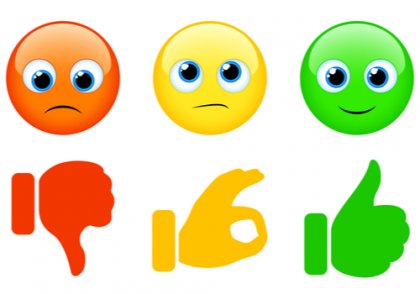The Traffic Light System for Anger Management

The traffic light system is a tool for kids ages 4-10 to help them deal with their emotions. Children at that age can identify basic emotions but have trouble managing them properly. The traffic light system uses a recognizable symbol, the classic stoplight, to teach children how to manage emotions, especially negative ones.
Most children understand perfectly how a traffic light works because they see them every day, which makes it an ideal symbol for emotional management. Red means stop, yellow means wait or slow down, and green means go.
If you apply the traffic light colors to children’s anger, they learn to manage their emotions as if it were a game.
That being said, you might ask yourself how you can get a child to relate their emotions to a traffic light. Well, if you want to use the traffic light system, you first have to teach children to associate the stoplight colors with emotions and behavior. In this article, we’ll explain each color’s function and response.
“Emotional self-awareness is the building block of the next fundamental emotional intelligence: being able to shake off a bad mood.”
-Daniel Goleman-

Emotional self-regulation
Why is it so important for children to manage their emotions? Laura Chica, a psychologist and life coach, believes that it’s important to teach children emotional control and encourage self-awareness. She believes that the need to learn to identify their own emotions and how to react to them. Likewise, they need to learn that their reactions will differ depending on their mood, and they have the power to choose the appropriate reaction to each situation.
A 2009 study by Pamela M. Cole emphasizes the importance of emotional self-regulation for little ones to help prevent more serious disorders later in life. That’s why we’re taking the time to highlight the traffic light system. It’s a great example of a technique that can help children learn to control their emotions.
A team at the Duke University Department of Psychology and Neuroscience also highlights the importance of emotional self-regulation for proper development. According to the study, people who don’t learn those skills as children run the risk of health problems later on in life.
The traffic light system – What do the three colors mean?
Red
STOP, calm down. When you can’t control an emotion, specifically anger, you have to stop just like you stop at a red light in an intersection. If you feel overwhelmed with anger, you need to pause and think about what’s happening to you.
Yellow
THINK and reflect on the problem and how you’re feeling. “How do I feel right now?, “Am I angry?”, or “Do I feel sad?” Ask the child to think about the possible alternative responses and consequences of the situation. What’s the most appropriate response? What’s the solution that offers the most benefits?

Green
ACT, solve the problem. Once the child thinks about the possible responses, they choose the best option. Then, they carry it out to solve the problem they’re having. Reinforcing their positive responses is important for their learning process. According to Skinner’s reinforcement theory, positive reinforcement helps the child feel like their effort is valid and noticed. That encourages them to engage in those same behavior patterns in the future.
In conclusion, emotional regulation is a fundamental skill to impart to children. Adults need to make sure to give children the tools to be able to deal with emotions such as anger, fear, and frustration. Given the importance of this skill, it’s great that there are tools such as the traffic light system to help children learn in a fun and accessible way.
The traffic light system is a tool for kids ages 4-10 to help them deal with their emotions. Children at that age can identify basic emotions but have trouble managing them properly. The traffic light system uses a recognizable symbol, the classic stoplight, to teach children how to manage emotions, especially negative ones.
Most children understand perfectly how a traffic light works because they see them every day, which makes it an ideal symbol for emotional management. Red means stop, yellow means wait or slow down, and green means go.
If you apply the traffic light colors to children’s anger, they learn to manage their emotions as if it were a game.
That being said, you might ask yourself how you can get a child to relate their emotions to a traffic light. Well, if you want to use the traffic light system, you first have to teach children to associate the stoplight colors with emotions and behavior. In this article, we’ll explain each color’s function and response.
“Emotional self-awareness is the building block of the next fundamental emotional intelligence: being able to shake off a bad mood.”
-Daniel Goleman-

Emotional self-regulation
Why is it so important for children to manage their emotions? Laura Chica, a psychologist and life coach, believes that it’s important to teach children emotional control and encourage self-awareness. She believes that the need to learn to identify their own emotions and how to react to them. Likewise, they need to learn that their reactions will differ depending on their mood, and they have the power to choose the appropriate reaction to each situation.
A 2009 study by Pamela M. Cole emphasizes the importance of emotional self-regulation for little ones to help prevent more serious disorders later in life. That’s why we’re taking the time to highlight the traffic light system. It’s a great example of a technique that can help children learn to control their emotions.
A team at the Duke University Department of Psychology and Neuroscience also highlights the importance of emotional self-regulation for proper development. According to the study, people who don’t learn those skills as children run the risk of health problems later on in life.
The traffic light system – What do the three colors mean?
Red
STOP, calm down. When you can’t control an emotion, specifically anger, you have to stop just like you stop at a red light in an intersection. If you feel overwhelmed with anger, you need to pause and think about what’s happening to you.
Yellow
THINK and reflect on the problem and how you’re feeling. “How do I feel right now?, “Am I angry?”, or “Do I feel sad?” Ask the child to think about the possible alternative responses and consequences of the situation. What’s the most appropriate response? What’s the solution that offers the most benefits?

Green
ACT, solve the problem. Once the child thinks about the possible responses, they choose the best option. Then, they carry it out to solve the problem they’re having. Reinforcing their positive responses is important for their learning process. According to Skinner’s reinforcement theory, positive reinforcement helps the child feel like their effort is valid and noticed. That encourages them to engage in those same behavior patterns in the future.
In conclusion, emotional regulation is a fundamental skill to impart to children. Adults need to make sure to give children the tools to be able to deal with emotions such as anger, fear, and frustration. Given the importance of this skill, it’s great that there are tools such as the traffic light system to help children learn in a fun and accessible way.
All cited sources were thoroughly reviewed by our team to ensure their quality, reliability, currency, and validity. The bibliography of this article was considered reliable and of academic or scientific accuracy.
- Planells, O. (2012) ¿Cómo educar las emociones? La inteligencia emocional en la infancia y la
adolescencia. Barcelona: Cuadernos Faros - Chóliz, M. (2005). Psicología de la emoción: el proceso emocional. Universidad de Valencia
This text is provided for informational purposes only and does not replace consultation with a professional. If in doubt, consult your specialist.







